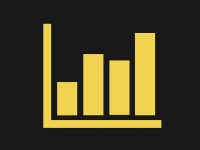If you’re into economic policy, today was a jaw dropper.
Stephen Poloz, the governor of the Bank of Canada, shocked markets today when he announced a .25 per cent cut in the bank’s key lending rate.
The key rate had been at 1 per cent since 2010 and experts were expecting a rate hike later this year.
Instead Poloz trimmed the rate in a bid to stimulate Canada’s economy which is likely to be damaged by sinking oil prices.
So what does this mean to you?
Well, if you have a variable rate mortgage hopefully you’ll see a rate reduction on your mortgage.
I say hopefully because at least one major lender – TD Canada Trust – has come out and said it’s not cutting it’s prime rate to match the Bank of Canada. Whether other lenders fail to pass on savings to their customers remains to be seen.
TD may ultimately drop its prime rate if other lenders lead the way.
If you do benefit from a rate drop then you might want to keep your payments the same so that more of each payment goes to paying down your mortgage balance sooner.
If you also have more expensive debt – like credit card balances – you may be better of using the extra money from a reduced mortgage payment to tackle the expensive debt faster.
The rate cut could be short-lived if the economy starts to pick up.
The key lending rate cut has other side effects as well. The Canadian dollar has dropped against the US dollar and the yield on five-year Government of Canada bonds dropped.
The drop in the bond yield could lead to lower fixed rate mortgages in the coming days but it will only impact new mortgage borrowers.
If you have a fixed-rate mortgage you might consider refinancing to a lower rate, provided you have at least 20 per cent equity in your home and the payout penalty isn’t so expensive that it wipes out most or all of the potential savings a lower rate could provide.








